What types of wallpaper can be painted?
Wallpaper for painting is available in white. They are also longer and wider than regular rolls. Manufacturers offer several types of coatings that can be painted:
- Non-woven. Non-woven wallpaper is perfect for painting. The coating looks stylish and masks wall defects. Non-woven canvases undergo repeated repainting, but the relief will become less noticeable. They can be painted on the wrong side, and then glued.
- Cullets. In fact it anti-vandal wallpapermade of durable material and resistant to mechanical damage. On the wall cullet look like a seamless canvas, hide surface irregularities. The coating is durable, can be painted many times. Before painting, the canvases are treated with a primer.
- Paper. These are processed with a special composition of the canvas, smooth or embossed. They are able to withstand 2-3 repainting without losing their original appearance. The dye is applied in a thin layer, it is not necessary to impregnate the canvas. When identifying bald spots and stains, you need to paint with a second layer.
- Linkrust. The wallpaper is produced in a neutral color, then there is coloring or art painting. It is recommended to paint one day after pasting, or wait 2-3 days. The second layer is applied after 4-5 hours if necessary. Features linkrosts - original patterns, they can be distinguished from the general background.
- Washable. Wallpaper is treated with a special water-repellent composition to protect the coating from exposure to steam and moisture. After coloring, the wallpaper loses its protective properties, therefore, varnish is applied on top of the paint. From the category of washable coatings, you can paint vinyl wallpapers. Most often washable wallpaper used in the interior of the kitchen.
- Liquid. In fact, it is an analogue of plaster. Liquid wallpaper is sold in the form of a ready-made mixture or a dry substance (it is diluted in water before work). Acrylic varnish is often applied to liquid wallpaper - it provides the coating with durability and resistance to cleaning. The coating itself looks original, pleasant to the touch. After painting, all effects disappear. You can change the color when applying the mixture to the wall by adding color to the mixture.
What wallpaper can not be painted?
It is important to consider that not all wallpapers can be painted.
- Single-layer paper wallpaper - quickly get wet and slide from the wall;
- paper based vinyl;
- textile;
- washable wallpaper based on acrylic - the paint does not dry well, leaves streaks and stains;
- flat vinyl;
- photo wallpaper.
DIY Tools
For painting, painting equipment will be required.
- The first and most important tool is paint roller. The final result depends on it. Selection tips can be found in the appropriate section.
- Need for roller wringer tray.
- You can breed paint inpallet or any other capacity.
- Will need small brushto paint corners, patches along the ceiling and floor skirting.
- To shelter the floor, windows, windowsill film.
- Skirting boards and small elements are sealed masking tape.
- Come in handy rags or sponge to remove splashes.
- You will need to work telescopic handle for roller, stepladder or stool.
DIY painting technology
Painting a wall covering does not differ from other painting works. The main thing is to choose the right paint, prepare the room and other equipment
Preparation before staining
Before work, it is necessary to prepare the room and walls for painting. Things to consider:
- You need to paint the wallpaper after the glue has completely dried.
- Cullets are pre-treated with a primer.
- To remove traces of glue from non-woven wallpaper, otherwise defects will emerge after painting.
- Paints tend to dry quickly. It is recommended to pour a little into the pan and keep the jar closed.
- The consistency should resemble liquid sour cream. Stir it thoroughly before use until smooth.
- If you are not comfortable with the tone, you can add color. The composition is prepared immediately for the whole room, otherwise different shades will turn out.
- Cullets must be painted in at least 2 layers. Between work, an interval of 10-12 hours is required.
- The optimum temperature for painting is 17-25 °.
- You can not paint the wallpaper with the windows open - because of the draft, the sheets may fall off.
Painting process
When inventory and walls are ready, you can start painting.
Walkthrough
- Remove or cover furniture with plastic wrap.
- To paste over doors, window sills, plinths with masking tape.
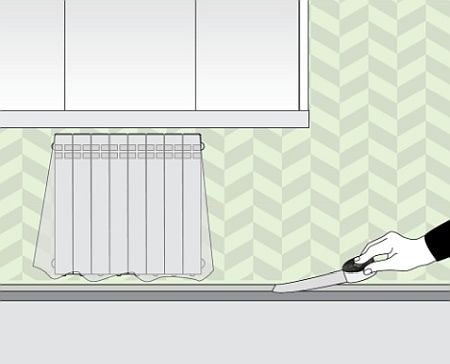
- Immerse the rollers in warm soapy water, squeeze and rinse with clean water or run on masking tape - there will be no lint on the painted surface.
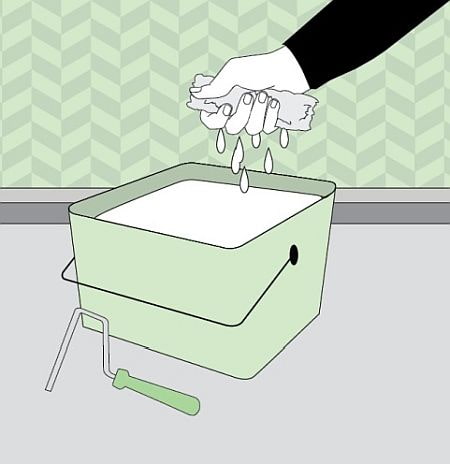
- It is recommended to start painting from above - with a small roller or brush, process 5-10 cm from the ceiling around the perimeter of the room.
- Near the floor, gently paint the wallpaper with a small roller or brush.
- Relief elements painted with a brush.
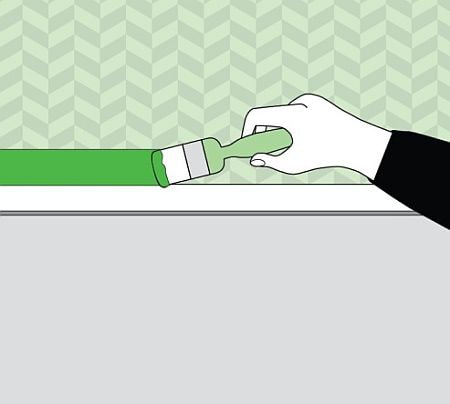
- Use a large roller to paint the wall from top to bottom, avoiding bubbles and drips. Do not hold the roller in one place.
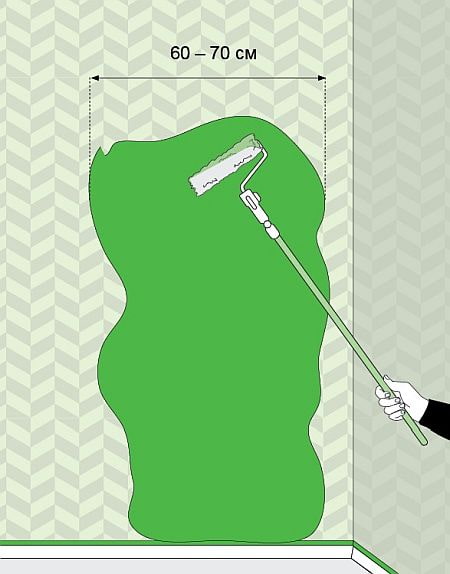
- If necessary, apply a second coat (after drying the first).
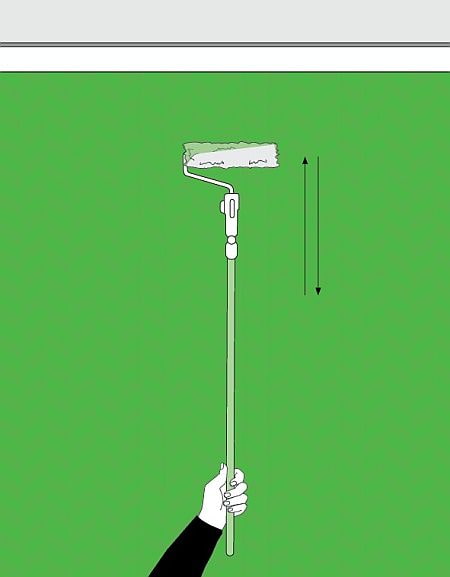
- After drying, the walls can be coated with acrylic colorless varnish, which will protect them from contamination.
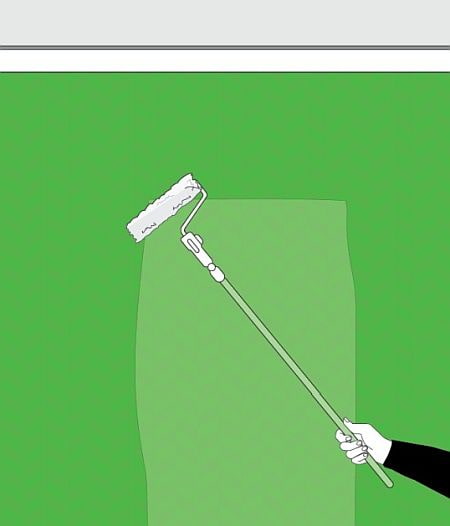
- Using a rag, remove spray, rinse and dry brushes and rollers.
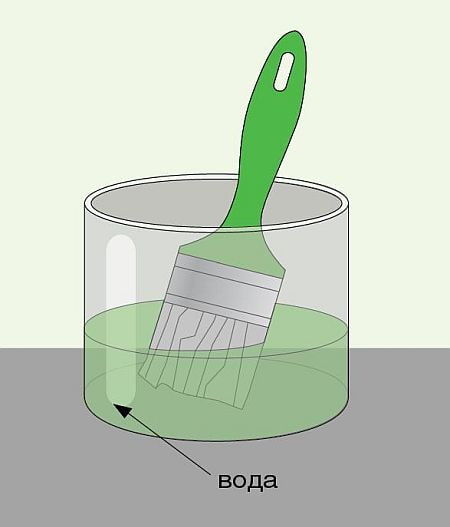
Video instructions
Many have doubts before work, especially if the person is not a painter. Video with explanations will help to understand the technology of painting wall coverings.
Finish clearance
The most important stage of painting, but there are simple methods for a beautiful design of the walls with your own hands.
Billing Highlight
To emphasize individual elements on the wallpaper or to add volume to the pattern, the technique of textured selection is practiced. Without waiting for the wallpaper to completely dry, gently pat the area of the picture with a damp cloth or sponge, removing the dye. After the surface has completely dried, the picture is given the desired shade.
There is wallpaper on a non-woven basis for painting from the wrong side. To highlight a textured element, the selected pattern is painted in the desired color or remains in a natural (usually white) tone.
Combination of 2 or more colors
To highlight individual zones, a combination of colors is practiced. There are several options: a combination of related shades, a gradient (using one color with a smooth transition from light to dark, or vice versa) and a combination of two contrasting colors.
This does not hurt the knowledge of the rules of color. Otherwise, it is not recommended to use more than two colors to avoid bad taste.
The combination is possible in any direction:
- horizontally,
- vertical
- diagonals.
Drawing a picture on the wallpaper with your own hands
A popular way to design wallpaper after painting is to apply a drawing. Modern tools will help to cope with the task, even inexperienced masters. There are a lot of options for the picture, consider some of them.
-
Using a textured roller. The tool is a conventional convex paint roller. Before work, you can work out on extra pieces.To be sure and to combine the picture, you can mark the wall.
-
Using a stencil. It can be made independently of plastic or cardboard. The stencil is attached to the wall with masking tape. After preliminary marking (to ensure perfect alignment of the pattern) paint is applied to it with a sponge. After 5-10 minutes, the stencil is removed, the next section is stained similarly.
-
Freehand or artistic. If you have artistic skills, you can independently create a picture on the wall. Those who can not draw, will help a special device - a projector. A sheet with a drawing is brought to it, and the contours displayed on the wall are outlined in pencil. The finished image is painted in the desired color.
-
Using stamps. Another popular way of drawing on wallpaper is to use a stamp. He is smeared with paint, pressed to the wallpaper for a few seconds. You can show creativity and create an abstract composition using improvised means. The disadvantage of stamping is blurry or smeared drawing, streaks.
Stain Free Tips
Wallpaper painting has its own tricks. To achieve the perfect result without drips, it is worth considering the recommendations of experienced painters:
- You need to paint a dry and clean wall.
- Use rollers with natural pile.
- If old paint is used, first test it on unnecessary sheets - it is not known how it will behave.
- Apply a thin layer of paint and distribute well on the surface.
- Inaccessible places to paint with a brush.
- Soak the roller well with dye.
- If possible, use a spray gun or spray gun.
What paint is better to paint?
When purchasing dye, it is necessary to build on the coating material and the purpose of the room (apartment, office, etc.).
| Type of wallpaper | Painting base |
|---|---|
| Paper | Water emulsion |
| Non-woven | Water-dispersion and water-emulsion |
| Cullet | Acrylic and latex |
| Linkrust | Liquid oil and acrylic, wax paste |
Basic rules for choosing paint
What to consider when choosing a paint:
- For rooms on the sunny side, latex paint is recommended - it does not fade with regular exposure to sunlight.
- For the kitchen and bathroom, the right solution is latex or acrylic paint. They are resistant to moisture and steam.
- Matte paint masks surface defects, dimming bright lighting.
- Satin paint is durable, recommended for the bathroom and kitchen.
- Glossy paint compensates for the lack of lighting in darkened rooms.
- Water-based paint is quickly washed off. It is not suitable if in the future it is planned to frequently wash the walls.
- A water-dispersion composition is suitable for painting the bathroom and kitchen - it is not afraid of water and cleaning.
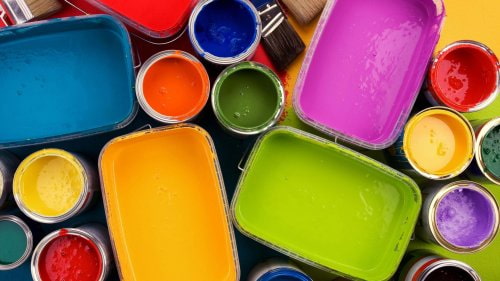
Which roller is better to paint?
Anyone who plans to paint the wallpaper by hand is better off using a paint roller. There are several types of tools, the difference in the length of the pile and the width of the device.
- Velor roller short-haired, good for smooth wallpapers. It will also help to slightly roll the picture, for example, when texturing an element.
- Deep relief is better to paint fur long-haired roller. The villi are able to penetrate the entire depth of the texture, painting over the most inaccessible places.
- Smooth canvases can be painted foam roller. But he leaves bubbles on the wallpaper, reducing the quality of work.

Features of ceiling painting
Wallpapering the ceiling is popular for interior decoration. The algorithm for painting the ceiling is the same, but there are nuances that are important to consider:
- Cover the floor with windows, window sills, furniture if possible.
- Ceiling plinth painted in the same color as the ceiling. To protect the wallpaper on the edge of the baseboard, stick masking tape.
- It is better to work during daylight hours to evaluate the result in daylight and electric lighting.
- If priming is required, it must have the same base as the paint. You can start painting the ceiling after the primer has completely dried.
- After applying the first coat, turn on the light and inspect the ceiling. If there are gaps - paint over.
- The ceiling is painted in 2 layers. The first is distributed parallel to the window, the second is perpendicular.
- New wallpaper on the ceiling can not be painted for 1-3 days until the glue dries.
Paint consumption calculator
Dye consumption is calculated based on the area to be painted. Typically, the manufacturer on the bank indicates the amount of proposed work. To avoid mistakes and unnecessary expenses for painting, you can use the provided paint consumption calculator.
Wallpaper painting - the ability to transform the interior in any style. Proper preparation and selection of material guarantee an effective result. Wallpaper for painting can be repainted repeatedly, which saves the budget when translating creative ideas.


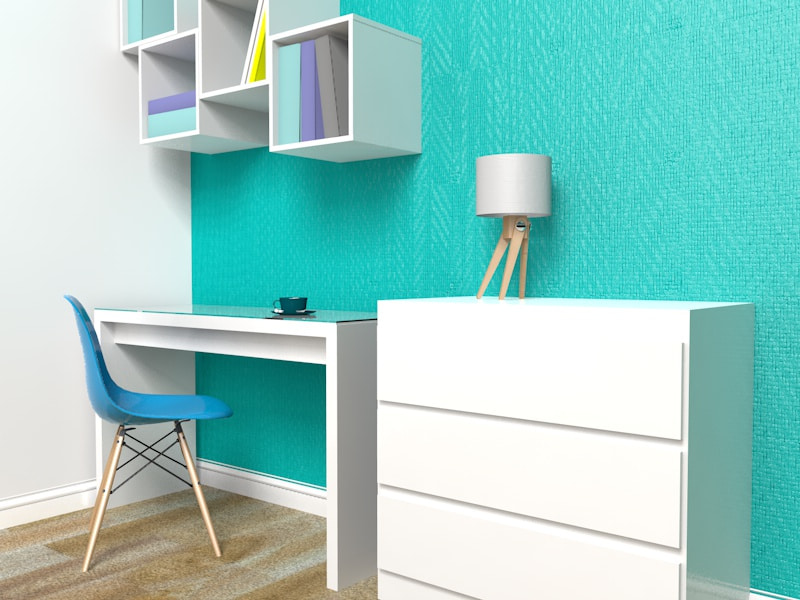
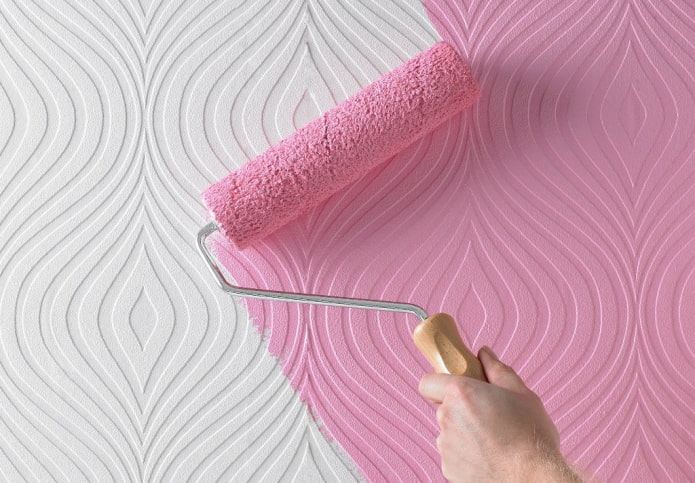
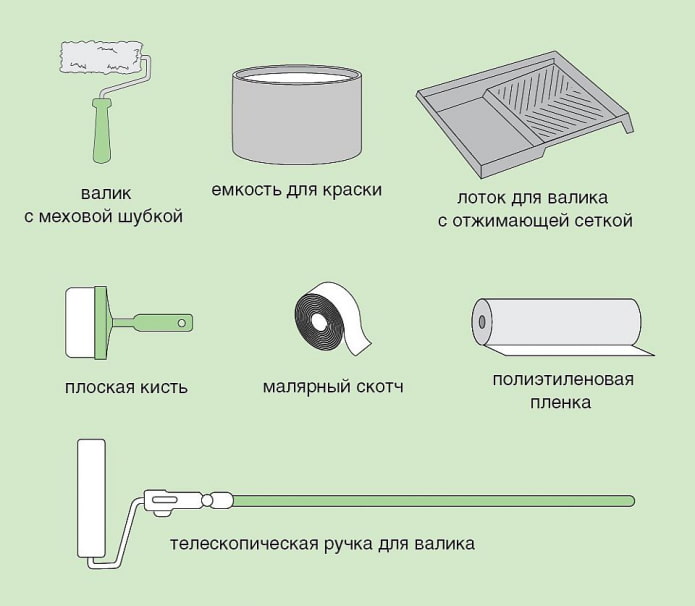



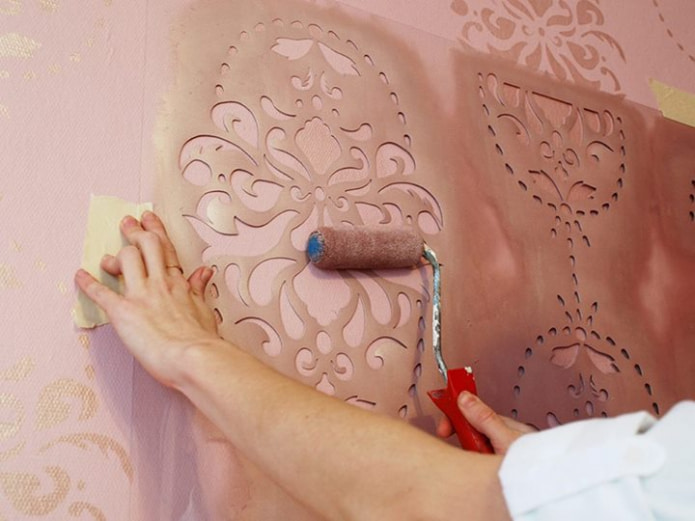
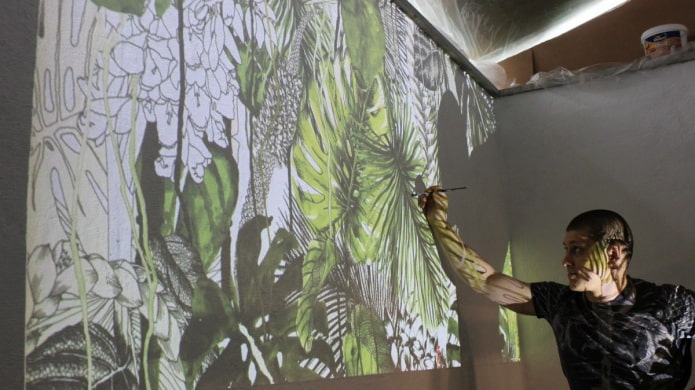
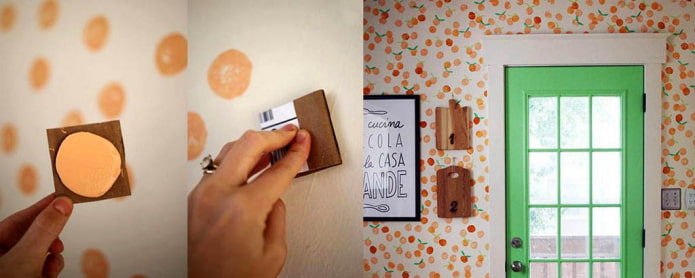

 Installation of ceiling tiles: selection of materials, preparation, procedure
Installation of ceiling tiles: selection of materials, preparation, procedure How to glue the ceiling plinth to the stretch ceiling?
How to glue the ceiling plinth to the stretch ceiling? Ceiling plinth for stretch ceiling: types, recommendations for selection
Ceiling plinth for stretch ceiling: types, recommendations for selection How to choose a screwdriver for home?
How to choose a screwdriver for home?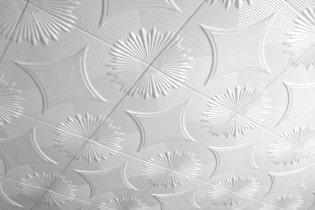 Foam tile for the ceiling: the pros and cons, the stages of gluing
Foam tile for the ceiling: the pros and cons, the stages of gluing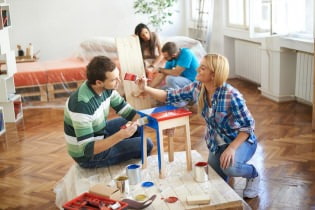 Repair in practice: how to repaint furniture yourself
Repair in practice: how to repaint furniture yourself